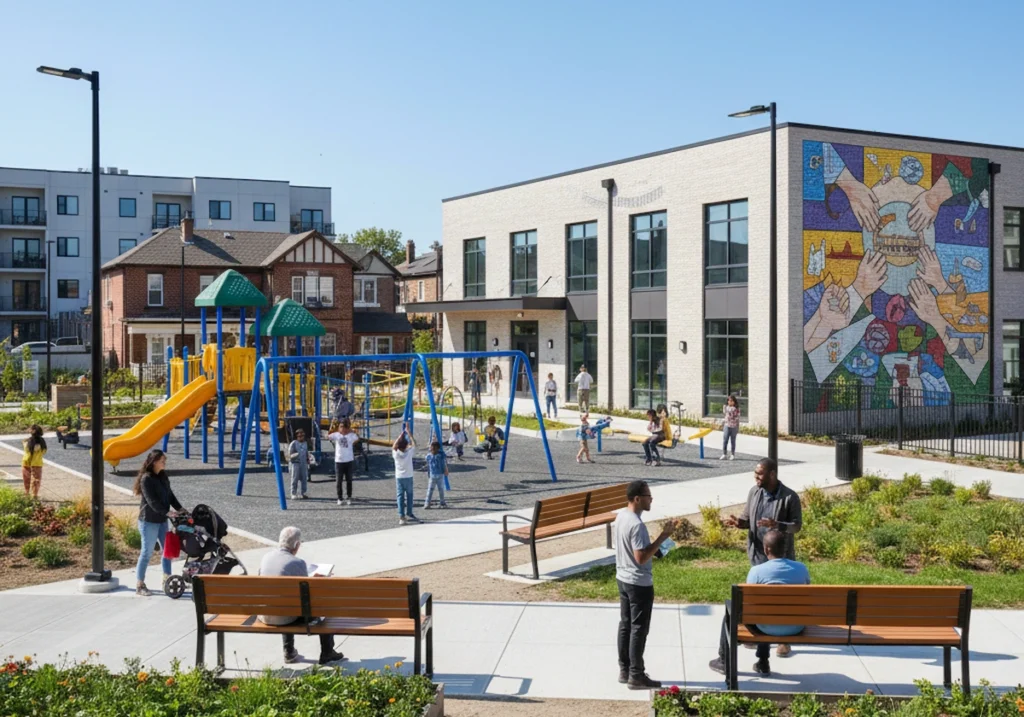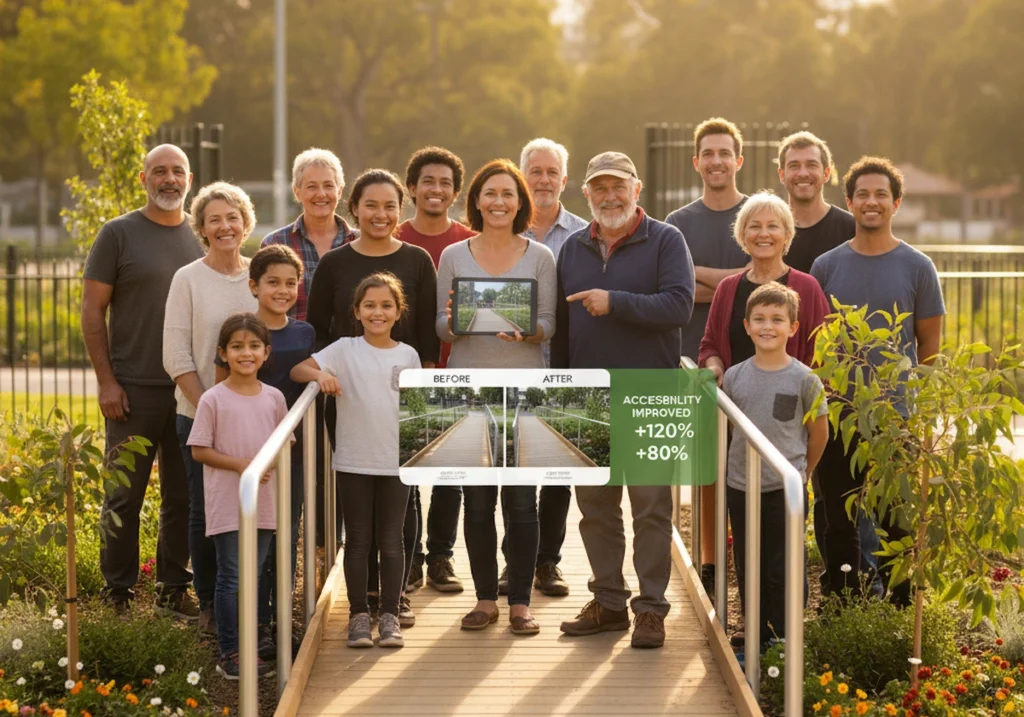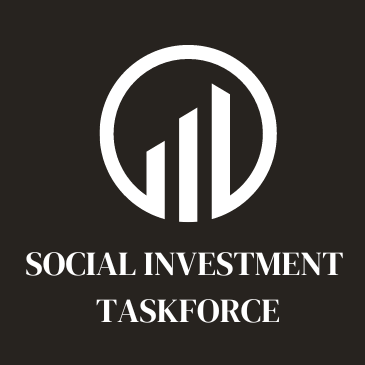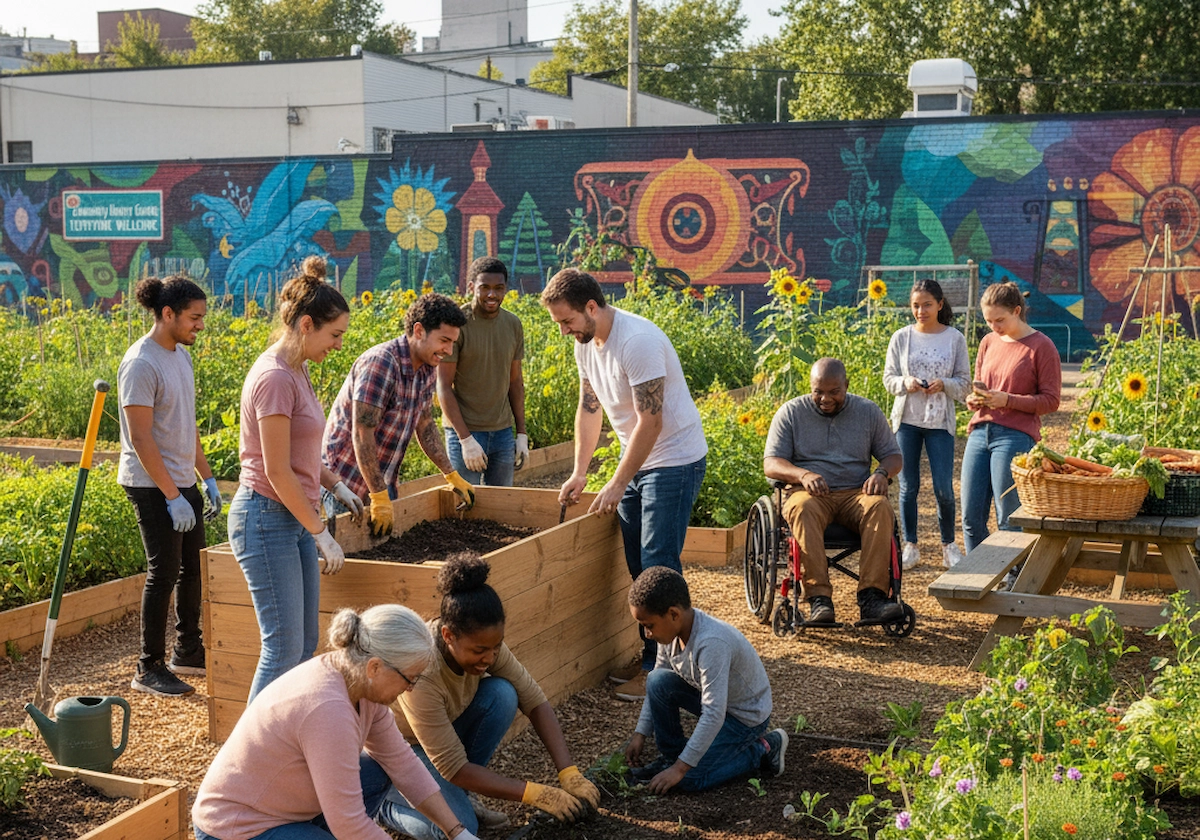Social investment means putting money into projects that drive community development while you earn financial returns. Basically, your money funds things like affordable housing, job training programs, or clean energy projects that improve real lives. It’s different from buying shares or property because the goal includes more than profit.
Traditional investments focus on one question. How much money will this make? On the flipside, social impact investment asks two questions: how much will this make, and how will it help people? Both answers need to work.
This article shows you how social investment plays out across Australia. You’ll see real examples, learn how residents guide these projects, and find ways to get involved.
Ready to see what this looks like in your neighbourhood? Let’s start there.
How It Shows Up in Your Neighbourhood
How does social impact investing show up in your neighbourhood? You’ve probably walked past one of these projects this week without realising it. Believe it or not, across Australia, investors fund initiatives that create change in local communities while earning returns.

Look around and you’ll spot them:
- Affordable housing developments: Apartments get built for families priced out of the regular property market. The setup works like this: rental income flows back to investors, while people gain stable homes they can afford for the long term.
- Job training programs: Young people and unemployed adults learn new skills for industries facing worker shortages. What makes these work is that government agencies and non-government organisations team up on these programs, and the partnership lifts employment outcomes across the board.
- Community renewable energy projects: Local residents own stakes in solar farms or wind installations. As power bills drop and clean energy gets generated, everyone with a stake earns ongoing investment returns from the setup.
These aren’t charity efforts. Social impact investments fund them with the aim of sustainable development and solid financial performance.
Working With What Communities Already Have
What if the best solutions were already sitting in your community? Asset-based community development starts with this idea. Instead of focusing on what’s missing or broken, this approach looks at the skills, spaces, and networks already there. Plus, social investment can multiply those existing strengths.
Picture a neighbourhood with skilled tradespeople, an unused community hall, and volunteers ready to contribute. A social impact investment might fund equipment and coordination to turn that hall into a training centre. From there, the tradespeople teach, young people develop skills, and the community gains a new resource that builds on what was already there.
Other approaches focus on problems and deficits. They bring in outside experts to “fix” communities. Asset-based community development flips this around. It recognises that local communities understand their own needs better than anyone else.
Let’s be honest, social capital grows when you invest in people’s existing abilities.
Programs like the Australian Government’s Stronger Communities Programme emphasise community input as a core element of funding decisions. Plus, better outcomes happen when investment strengthens what’s already working.
Why Community Voices Shape Success
Community voices shape success in social impact investing because co-design puts residents in control. Also, programs work better when the people affected guide the decisions. Instead of government agencies or organisations creating initiatives and hoping they fit, co-design asks people what they need first.
Here’s why this approach changes everything:
Local Knowledge Beats Outside Experts
Residents spot challenges and opportunities that outsiders miss completely. A neighbourhood knows which streets feel unsafe at night, which local businesses could offer apprenticeships, and where families gather most.
This is why co-creation works. It taps into this understanding from day one, which means programs address real issues rather than guessed ones.
How Community Input Shapes Better Outcomes
Programs designed with residents stick around longer and deliver stronger results. The reason is that when people help build an initiative, participation jumps naturally.
What’s more, social enterprises and service delivery improve because the design fits actual needs. Also, government agencies see better returns on investment as a direct result of communities guiding the planning from the start.
Funding Follows the Co-Design Model
Investors and funding partners increasingly look for initiatives built through co-design principles. On top of that, partnerships between government agencies, non-government organisations, and local communities shape how resources flow and which focus areas receive attention.
The outcome is that programs involving residents from the planning stage attract more sustainable development support across urban and rural settings.
So what happens when communities get this kind of say in how investment works?

Real Changes You Can See and Measure
Communities with strong social impact investments see real differences in how people live. Those changes aren’t abstract. They show up as people finding work, families securing homes they can afford, and young people building futures in their own neighbourhoods.
The changes appear in measurable ways across different areas:
- Employment and skills development: Training programs help people develop skills that match local job openings, which lifts employment outcomes for those in need. Programs like these create pathways into industries facing worker shortages.
- Housing stability: Housing initiatives provide the kind of stability that ripples through entire families. When kids aren’t moving constantly, they do better at school. This allows parents to focus on work instead of worrying about where they’ll live next month.
- Environmental progress: Clean energy projects tackle two goals at once. They cut costs for residents while creating local work opportunities. Solar installations and wind farms generate ongoing returns for communities that host them.
Financial returns follow close behind social progress. The reason is straightforward. Government spending on crisis services drops when people have stable housing and employment. Investors earn their returns while communities grow stronger at the same time. Social capital builds as residents see their participation create visible improvements around them.
These outcomes show that social investment delivers both financial performance and lasting community development.
Where You Fit In
Social investment isn’t reserved for big banks or government departments. Individuals and organisations can participate in ways that match their resources through ethical finance.
Social Investment Taskforce specialises in finding investment opportunities that deliver strong returns alongside real community benefits. Our team works with clients to identify programs focused on employment, housing, and environmental projects that create measurable outcomes.

We understand that people want their money to support sustainable development while earning solid financial performance. Take our suggestion and talk to advisers who understand social impact investing. They can show you options that align with your values and meet your financial needs.
If you want to explore how your investment can strengthen local communities while delivering returns, contact us today.


